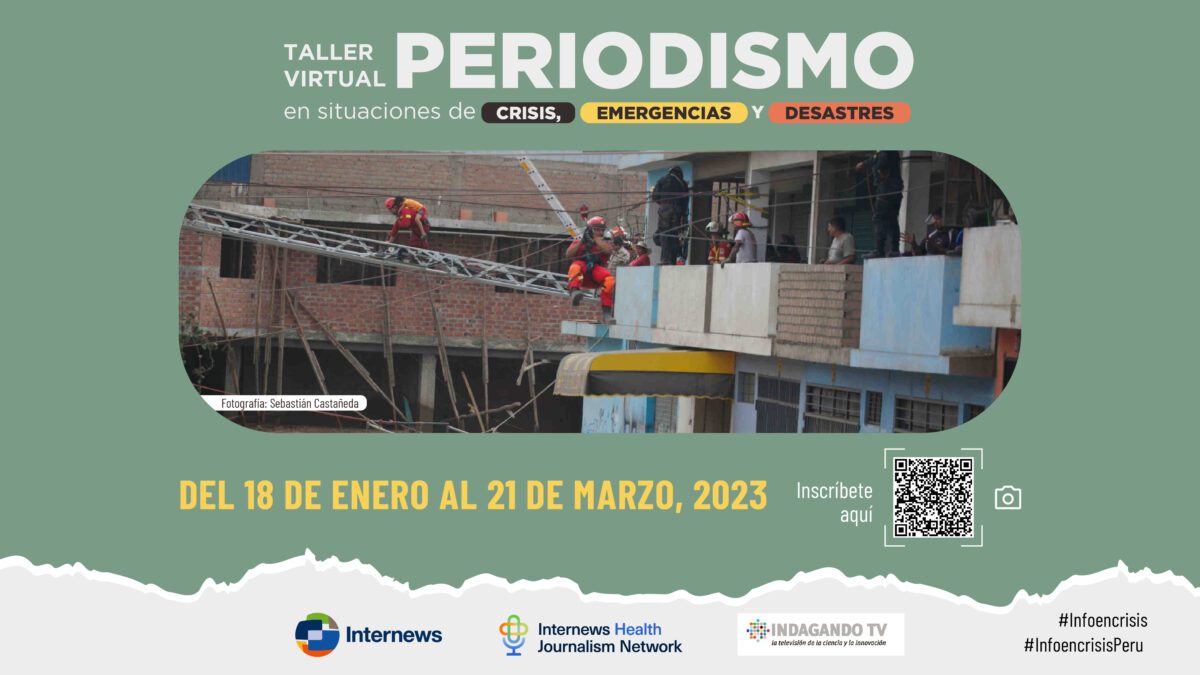Internews and Indagando TV will offer this pioneering course in Latin America for the first time

Latin America is the second most disaster-prone region in the world. According to the UN, 152 million people have been affected by 1,205 disasters since 2000. In response, Internews launched the course: “Journalism in Situations of Crises, Emergencies and Disasters.” This course will be free and available virtually for nine weeks from January 18 to March 21, 2023. Participants who pass will be able to receive a $400 scholarship to do journalistic work.
Internews, in collaboration with Indagando TV, has provided this course in Spain since 2011 and trained over 220 journalists. Now in its seventh edition, the course will focus on contexts relevant to Latin America and Peru specifically to provide journalists a unique training opportunity in science, health and investigative journalism.
Who is this course for?
Journalists living in Peru or covering this country. Students of Communication Sciences or Journalism who are finishing their studies and are interested in the subject can also participate.
Why is this course important?
During an emergency, media outlets often publish content that lacks accuracy surrounding a crisis’s main actors, timeline, and effects due to the situation’s immediacy. This course will give them the necessary tools to generate accurate information that helps a understand crises, emergencies, and disasters.
What is the methodology?
- All activities will be virtual.
- Weekly talks of 40 minutes will be interactive and feature specialists.
- A practical weekly workshop to demonstrate everything learned in the talks and help journalists to carry out journalistic work from the newsroom or from a remote work location and in the field.
- Participants must dedicate two hours per week
What skills will be taught?
- Defining crises, emergencies and disasters
- Climate change and its relationship to current disaster trends.
- The SENDAI framework for disaster risk reduction.
- The international system of humanitarian action. Who are the actors involved?
- Are we trained in an era of pandemics?
- Health problems depending on the type of disaster.
- The migration crisis.
- Geopolitics. What is the explanation behind the main crises, emergencies and disasters in Latin America?
- Peru’s strategy
Expected outcomes
- Those who pass the course will receive a certificate.
- They will be able to apply for one of 10 scholarships of $400 dollars each to to conduct journalistic work.
- Scholarships for field reporting